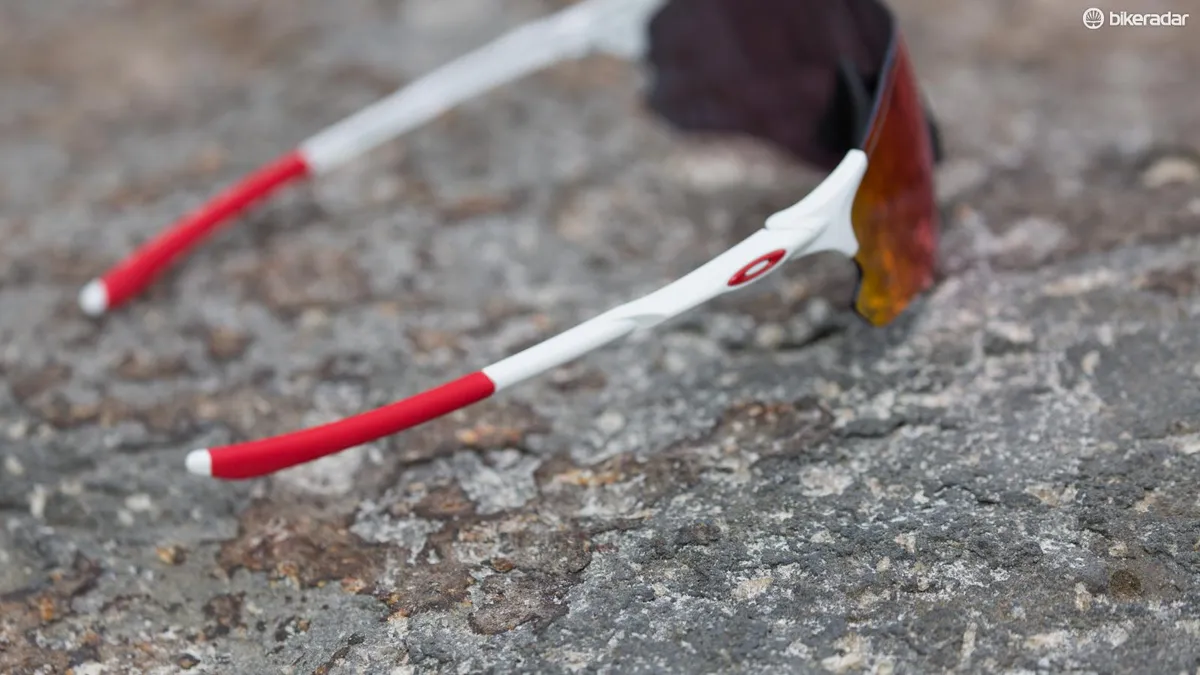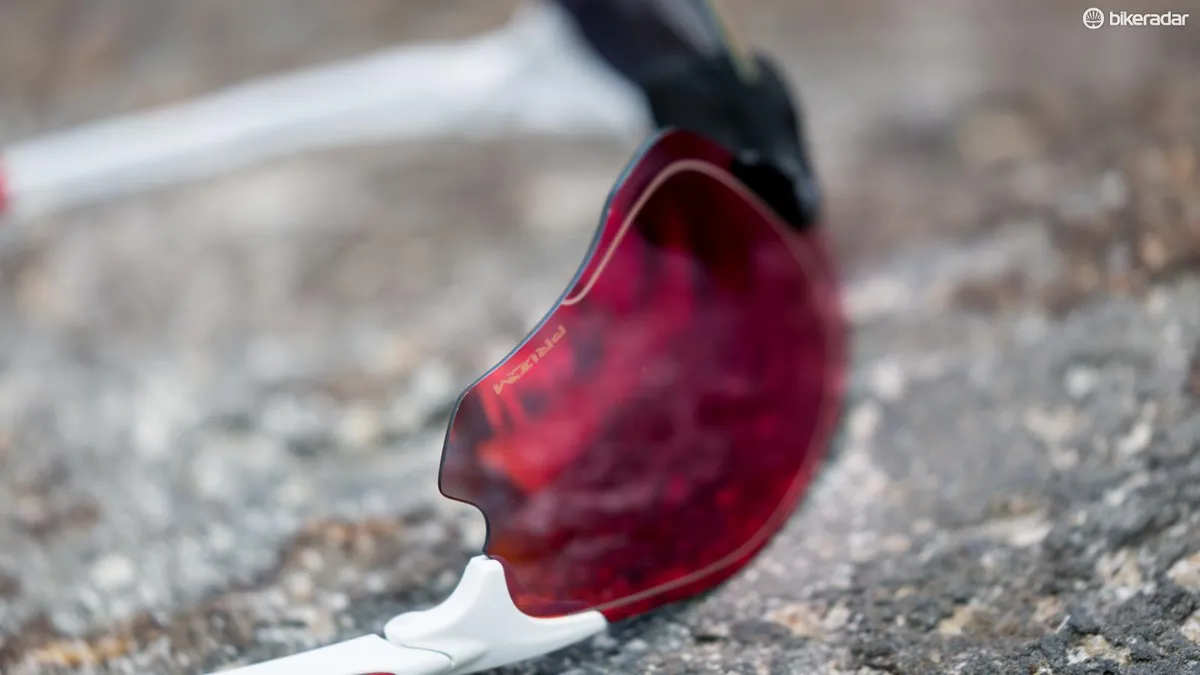It’s pretty rare nowadays to roll up to a bunch ride or race and not see someone wearing Oakley sunglasses. Between the Radar, Radarlock (and XL), Radar EV and Jawbreakers, Oakley frames are donned by a huge number of cyclists around the world.
In addition to looking great (ok, maybe not the Jawbreakers), they offer fantastic visual clarity, durable construction, and best-in-class comfort. However, all of these frames have something in common which obscures the view – the frame itself.
Oakley’s latest release the EVZero does away with the frame completely, and is designed for totally unobstructed vision. Claimed to be ‘the lightest performance sunglasses in history’, the new EVZero is a redesigned version of the the Sub Zero which was released in the 90’s.

Available in two lens shapes, Path and the slightly larger Range, both feature lightweight slender earsocks made from Oakley's 'O-Matter', and no-slip 'Unobtainium' rubber on the nosepiece and temple tips to keep the glasses securely attached to your face. Unfortunately the lens (or arms rather) are fixed, and though I'm not a frequent lens changer, it’s a feature I’d like to see.
- Related: Oakley Radar EV Path Prizm sunglasses
- Related: New Oakley Jawbreaker Sunglasses break ground
EVZero Path
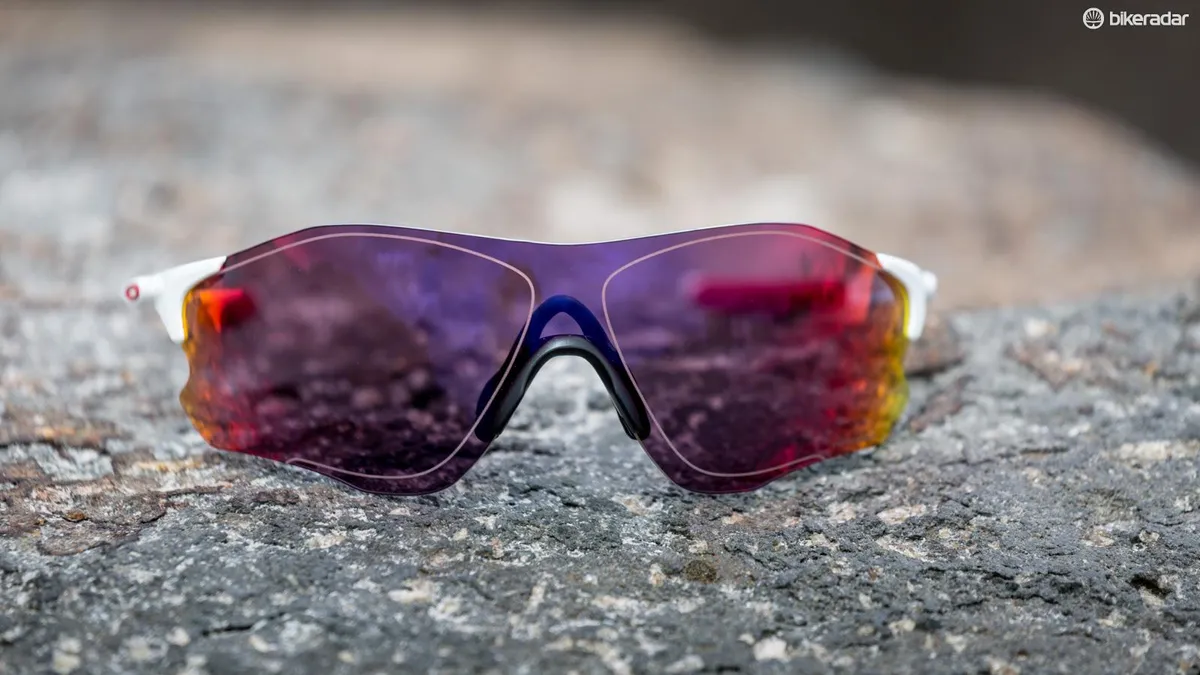
The Path lens shape is the smaller of the two, and weighs in at a feathery 22g, making them some of the lightest sports glasses around — lighter than the Spy Daft (28g), Smith Pivlock Arena Max (29g) and long-established roadie favourite the Oakley Radar Path (30g).
Both in fit and size, the EVZero Path is comparable to the Radar EV, with both lenses measuring 50mm. Even being the smaller of the two designs, the Path lens offers full coverage, and I didn't find myself looking over the top of the lens when tucked in an aero position. Despite the large curved lens, there was no noticeable visual distortion towards the edges.
One of the major complaints I’ve had with Oakley glasses in the past is that the long earsocks tend to overlap with some helmets' retention systems, something EVZero also falls victim to. It's not a major annoyance, but if your helmet moves so will the glasses.
Even though the lens forms the main structure of the glasses, they feel surprisingly robust, not flexy or cheap like some frameless sunglasses do. I didn’t experience any fogging even in major humidity, which left a few riding buddies flying blind as they took off from a stop light.
Our sample EVZero Path also featured Oakley’s latest Prizm lens technology. Oakley says its Prizm technology was 15 years in development, and each lens is designed to optimize light conditions experienced in a specific sporting environment. While there’s a range of lenses designed for everything from golf to baseball, for cycling there's a separate lens road and mountain biking.
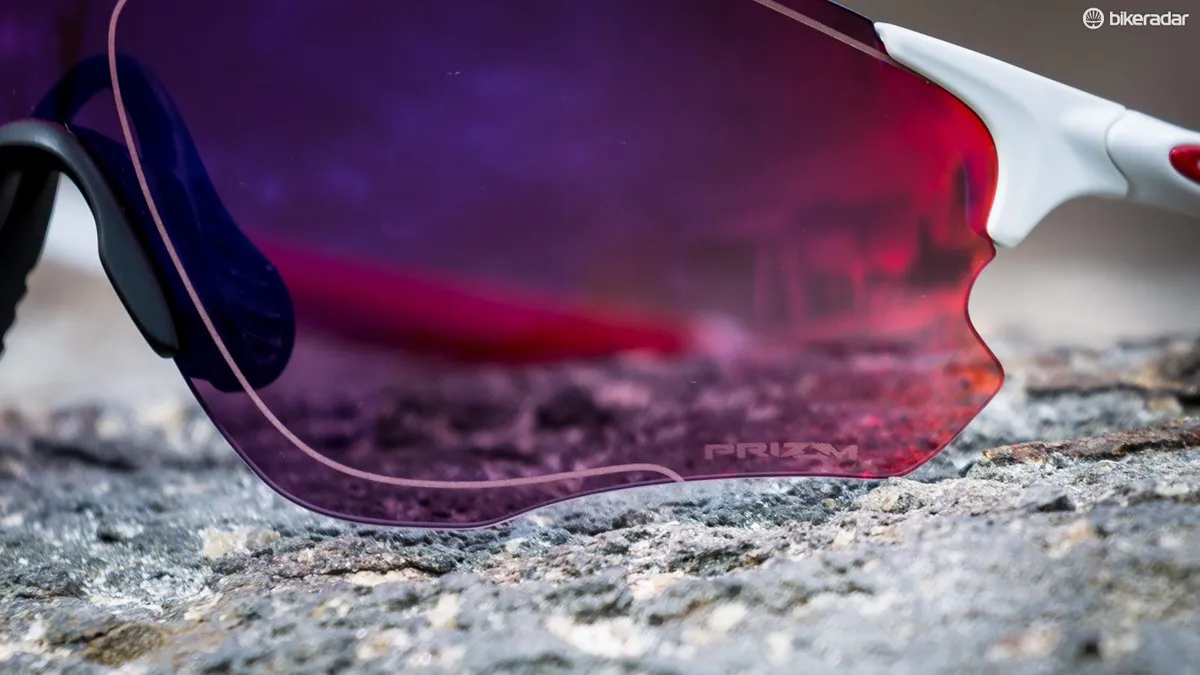
The Prizm Road lens I tested is claimed to boost road texture, painted lines, and traffic lights, while also enhancing greens and blues. It’s not a huge difference, but I did find vision was sharp, with certain road hazards and painted lines seemed to pop. As you can probably guess, the 20 percent light transmission was a bit dark for low light and night time riding.
Unfortunately, the Road Prizm lens doesn’t perform particularly well on the trail. It may be partially due to the low overall light transmission, but looking through the Road Prizm lens, rocks, roots and other obstacles were harder to pick out, especially in the trees.
Seeing that the lens isn’t swappable, if you’re planning to do much mountain biking or mixed surface riding, the Prizm road lens isn’t the best choice. That said, the EVZero Path is available in non Prizm lens options.
It’s also worth noting Oakley now only applies hydrophobic coating on the outside of its lenses. It’s not a huge issue for most, but the heavier sweaters among us may find this annoying as sweat often smears on the inside of the lens rather than beading and dripping off the bottom.
EV Prizm Range

The bigger of the two lens options, the EVZero Range weighs in two grams heavier than the Path version at 24g. While only 5mm taller than the Path, the Range lens shape surprisingly offered noticeably more coverage. When tucked in the aero position, I could just see the upper edge of the Path lens at the very top of my field of vision, while with the Range lens I couldn't see a distinguishable edge, even when I strained in an attempt to do so.
As with the Path lens shape, the Range has the same trouble with arms overlapping helmet retention systems, but surprisingly the large lens didn’t tap the brow of any of the helmets I tried them with, like some big sports glasses do.
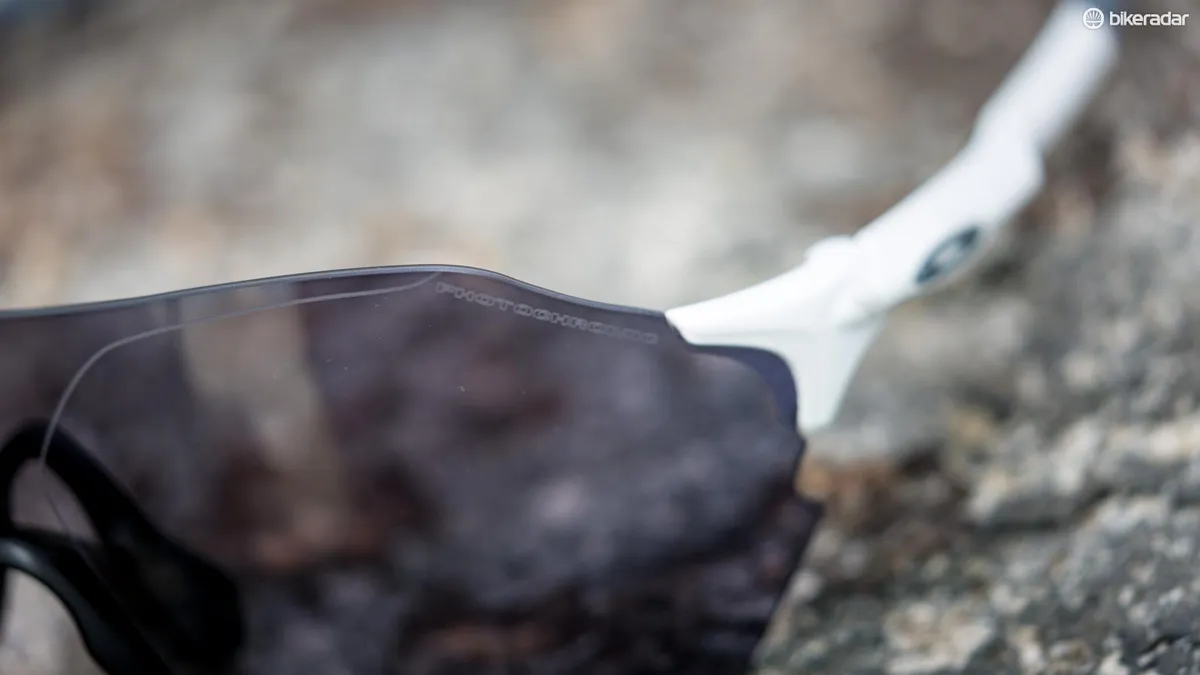
Our Range tester came equipped with Oakley’s photochromatic lens. With light transmission ranging from 69 - 23 percent, I have yet to find light conditions the lens doesn’t suit.
I’d grab these glasses for my dawn patrol rides, with the lens adjusting its tint as the sun came up, keeping my eyes comfortable the whole time. While the transition isn’t lightning quick, it handles the bright to dark (and vice versa) transition of whipping in and out of the trees on singletrack well.
Summary

Over the past two months I’ve been swapping between the EVZero Range and Path, and have ridden them in every light and weather condition you can imagine (on the east coast of Australia that is). I preferred the bigger Range lens shape, as I have extremely sensitive eyes and enjoyed the added coverage, although the larger lens may not suit smaller faces. The versatility of the photochromatic lens was also much appreciated.
By eliminating the frame, Oakley has created their widest unobstructed range of view yet. With distortion-free, crisp vision across the entire lens, and plenty of coverage to boot, the lightweight glasses literally disappear on your face, leaving you completely immersed in your environment. With that said, I'm not sure the EVZero is Oakley’s best effort.
The biggest niggle I have with the EVZero is the fixed lens, and I’d happily trade a few grams to be able to swap lenses — especially when it comes to the Prizm lens. As the Prizm lens provides great visual clarity for the environment it's been designed for, it's tuned so specifically that once you leave that environment it’s not great.
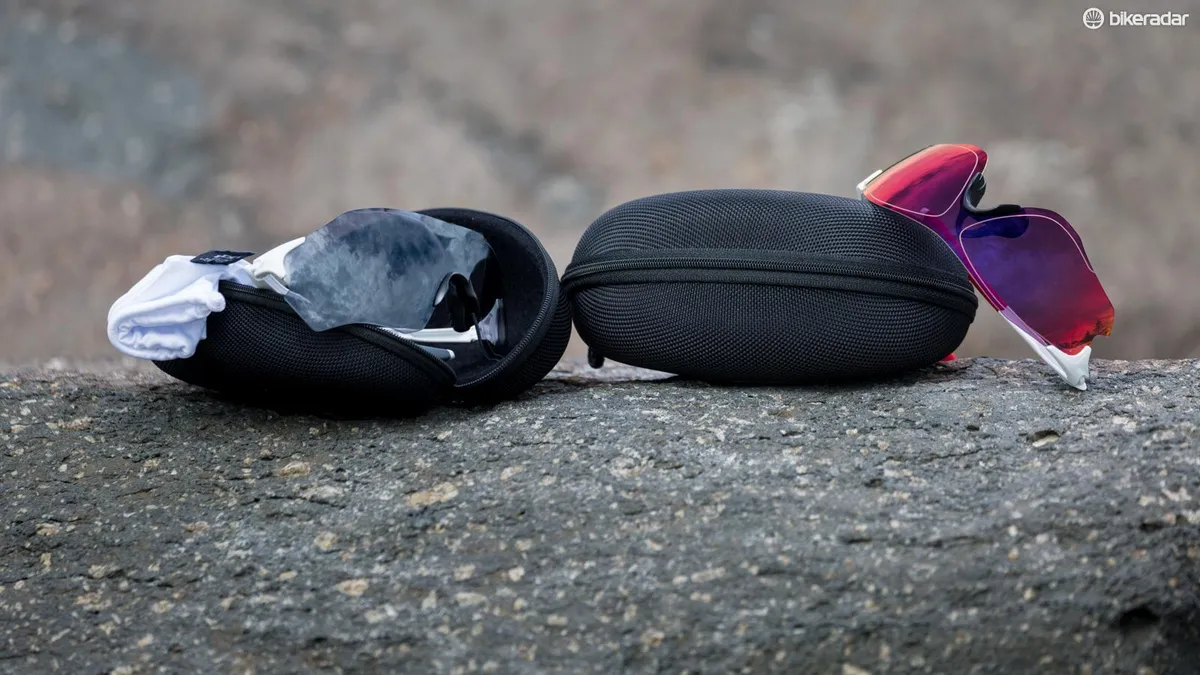
If you’re one to ride road and mountain bikes and want a Prizm lens, you’ll need a second pair, and at $170 / UK£140 / AU$220 the price may be too much for some. I would have loved to see the Switchlock lens changing system as seen on the Oakley Tombstone glasses implemented in the EVZero.
That said, the EVZero is available in non-Prizm and Photochromic lens options, and will cost you $190 / £170 / AU$270 and $160 / £130 / AU$200 respectively.
Overall the Oakley EVZero are a great pair of sports glasses, and if you’re not one to venture away from the tarmac, the Road Prizm lens offers fantastic visual clarity. For those who enjoy a mix of tarmac and trail, and don’t want to buy two pairs I’d say you should should consider a non Prizm or photochromic options.
